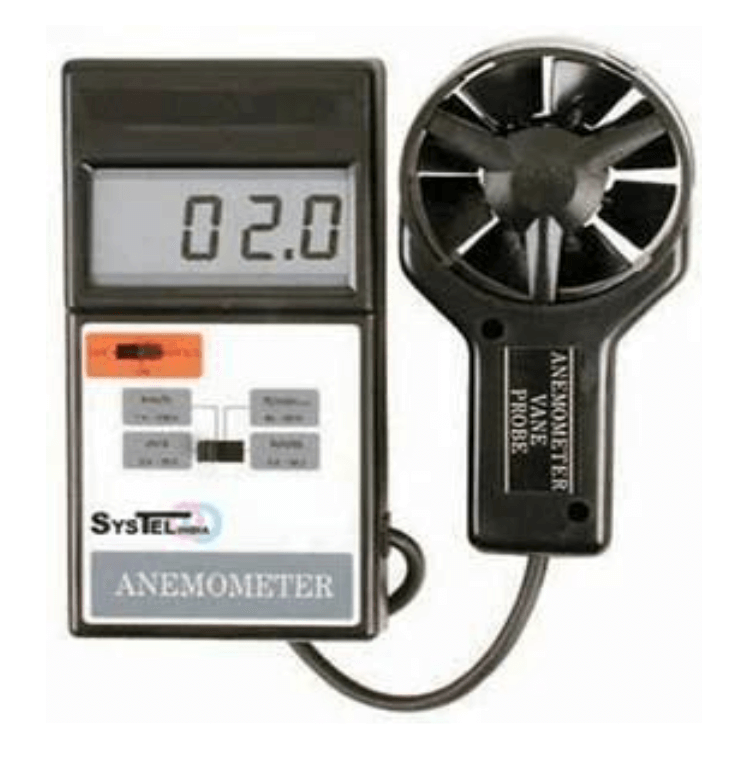AIR VELOCITY TEST BY USING VANE ANEMOMETER

ISO 14644 is a standard that provides guidelines for cleanroom environments, including air cleanliness classifications. While ISO 14644 does not specifically outline procedures for conducting air velocity tests with vane anemometers, it does provide general principles for testing and monitoring cleanrooms.
To perform an air velocity test with a vane anemometer in accordance with ISO 14644, you can follow these general steps:
- Select an appropriate vane anemometer: Choose a vane anemometer that meets the requirements of ISO 14644 and is suitable for measuring air velocity in cleanrooms. Make sure the anemometer is calibrated and in good working condition.
- Identify the test locations: Determine the specific locations within the cleanroom where you want to measure air velocity. These locations should be representative of the different areas in the cleanroom.
- Prepare the cleanroom: Ensure that the cleanroom is in normal operating condition and has reached a steady state. The cleanroom should be free from any unusual air currents or disturbances that may affect the accuracy of the measurements.
- Set up the vane anemometer: Attach the vane anemometer to a tripod or a stable surface. Position the anemometer at the test location, ensuring that the airflow direction aligns with the vane’s axis. Set the anemometer to the appropriate air velocity measurement range.
- Take measurements: Turn on the vane anemometer and allow it to stabilize. Hold the anemometer at the test location and record the air velocity reading. Repeat this process at each selected location within the cleanroom.
- Ensure proper positioning: To obtain accurate measurements, position the vane anemometer at the test location for a sufficient period, allowing it to average the airflow readings. Maintain a consistent distance between the anemometer and the measurement point throughout the test.
- Record and document the results: Note down the air velocity readings at each test location. Include relevant details such as the date, time, test location, anemometer model, and any other pertinent information. This documentation is crucial for tracking the performance of the cleanroom over time.
- Analyze the results: Compare the air velocity readings with the requirements specified in ISO 14644 or any other applicable standards or guidelines. Determine if the measured velocities meet the specified limits for the cleanliness class of the cleanroom.
Remember that ISO 14644 provides additional guidelines for cleanroom testing, including particle concentration measurements and other parameters. Be sure to refer to the standard for a comprehensive understanding of cleanroom requirements and testing procedures.